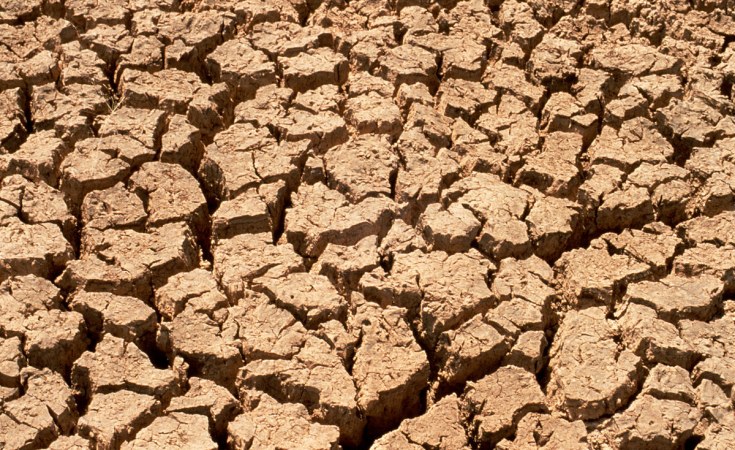
Parched earth in a drought
WINDOEK, Sept 12 (NNN-ALLAFRICA) — As fodder and pasture continue to decline and the dry season soldiers on, over 30,000 drought-related cattle deaths were recorded in Namibia between October 2018 and April 2019 – the normal rainfall season.
Rains were delayed and erratic, resulting in reduced area planted, poor germination and wilting of crops. Poor grazing and water conditions also affected livestock production.
Namibia, Angola and Botswana declared national drought emergencies.
Other countries affected by localised dry spells and drought included eSwatini, Madagascar, Mozambique and Tanzania. The drought has affected water supplies for domestic, industrial and agricultural use.
This is according to the July 2019 Synthesis Report on the State of Food and Nutrition Security and Vulnerability in Southern Africa compiled by the Southern African Development Community (Sadc) Secretariat’s regional vulnerability assessment and analysis programme, under the leadership of the food, agriculture and natural resources directorate and the disaster risk reduction unit.
The report highlights to cope, the selling of livestock – a livelihood asset – is likely to increase.
However, oversupply will reduce livestock prices and hence income earned. “Overall purchasing power will deteriorate with below average incomes, decreased casual labour opportunities in the agriculture sector, and increasing staple food prices,” the report stated.
It is recommended that governments and partners urgently assist food insecure populations with food and or cash-based transfers, adding emergency livestock supplementary feeding is also critical to save breeding herds.
Further, transboundary pests and diseases of crops and livestock require close monitoring.
It is also suggested emergency establishment or rehabilitation of community watering points for livestock and crops should be prioritised.
Most cropping is practiced during the November to April rainfall season, with the rest of the year being dry.
A strong drought affected central and western parts of the region during the 2018/19 rainfall season.
The report shows large parts of southern Angola, northern and southern Botswana, northern Namibia, north-western South Africa, southern and western Zambia, and north-western Zimbabwe received their lowest seasonal rainfall totals since at least 1981, when regional, comparable records began.
The severe El Niño-induced drought of 2015/2016 had primarily affected the south-central and east-central parts of the region.
Equally, the report indicates that Namibia’s key drivers of vulnerability include prolonged drought, traditional agricultural practices, and low economic performance (lack of sustainable incomes and high unemployment). — NNN-ALLAFRICA
